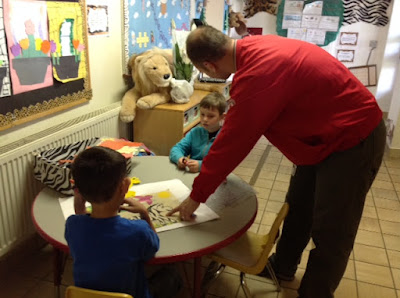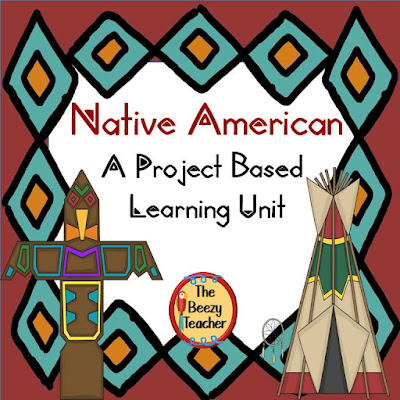Project-based learning (PBL) is increasingly becoming more popular in schools. What are the benefits of this approach to teaching?
Lesson planning is time-consuming, but PBL is a way of bringing in the new to the classroom. It is a journey of learning, and you will grow as a teacher with your students as you put the ideas into practice.
A short description of project-based learning is that it is a method where students gain knowledge by working for an extended period to investigate a topic. The investigation of an interesting topic can be done by a small group of students or the entire class. The key concept of PBL is that research is the focus. This approach means that students are given the opportunity to develop a deeper and richer understanding of a topic. Projects can last from a short period, such as a week, up until an entire term.
This approach is different from teacher-led instruction, instead of kids that an active role in their own learning. In Kindergarten and Primary grades, you guide the kids through the learning and PBL is not 100% student driven. A wide range of topics can be explored from health and science to social history and math.
.
PLB aims to develop kids’ critical thinking as well as foster creativity. In project-based learning, kids are often required to apply knowledge and skills and not simply recall information or recognize the correct answer. They are given the chance to experience self-motivated learning, which will increase their desire to ask more questions and conduct more research. As a teacher, you provide support only when needed and students work more independently. Your role shifts from content deliverer to facilitator, and you are enabling kids to become independent thinkers and lifelong learners
An important element of project-based learning is that you need to create a hook for the introduction. It is vital to get the kids interested and engaged. Project-based learning needs to have significant content and you need to outline the learning goals. Try to ensure that you meet some of the recommended standards. Yet, you need not need to fit every learning standard to a specific project. The driving question is something that should be complex enough so that the students cannot answer the question immediately with on search on the internet. Students will be working towards answering the in-depth inquiries.
Students can display their learning in a range of different easy, for example, a booklet, posters, brochures, and reports. An advantage of project-based learning is that differentiation is possible and kids with a range of capabilities are accommodated. Students are also taken greater responsibility for their own learning. They are learning by doing and they will retain more information. If you need to test the learning you can incorporate those skills into your PBL.
Note PBL is a term that is also used to refer to problem-based learning where students usually work in groups to solve a problem. Project-based learning promotes active learning and allows kids to have some control over the project. It allows for higher-order thinking.
Check out some of my project learning resources located in my store!
Exploring Native American soon? This project-based learning unit is filled with engaging activities and facts. The aim is to encourage students to explore the topic for an extended period.
This unit is ideal for Native American Heritage month (November) or any time of the year. This PBL was “piloted” on a kindergarten class, but could be modified for pre-K level.
It contains the following activities:
KWL chart, Pocket chart pictures
Drumbeats (syllables) Patterns
Writing Numbers Color words
Pattern block teepee Weaving Words
(writing sight words in order)
Sorting Facts Venn Diagram
Native American facts Rubric and Self Assessment
Native American Webquest Lesson Plan
Link to Voki Link to Tagxedo Word Splash
Common Core Standards
Crafts include:
various rug patterns, vase, paper roll Native American Family, dream catcher, teepee and wigwam houses.
Included in the product is the Native American Fact booklet, how to draw Native American items, as well as instructions on how to create your own Chatterpix, Voki, Doodle Buddy, and QR codes digital projects.
https://www.teacherspayteachers.com/Product/Project-Based-Learning-Native-Americans-1158491
Animals in winter is a perfect resource for project-based learning. Let your students explore the wonders of how animals use different strategies to survive changes in their environment.
This project based learning unit focuses on the animals chosen by the students, two animals that hibernate (bear and hedgehog), two animals that migrate (monarch butterfly and duck), and two animals that adapt (rabbit and deer) during the season of winter. This PBL was “piloted” on a preK class and they had a GREAT time! The activities presented in this packet can easily be adapted to a kindergarten level.
This unit contains the following activities:
Link to Voki, Sorting animals,
Animals in winter facts, Pocket chart pictures,
KWL chart, Patterns,
Rubric and Self-Assessment, Making sets,
Pre-Kindergarten Standards, Tree patterns,
Kindergarten Common Core Standards, Headband patterns,
This PBL has been updated to include technology tutorials for Chatterpix, Voki, and Thinglink and a fact booklet on Winter animals is included.
https://www.teacherspayteachers.com/Product/Project-Based-Learning-Animals-in-Winter-1152084
What is Project Based Learning? In pre-k and kindergarten it is a systematic and fun way to engage young students in a curriculum based study by focusing on a meaningful question or questions. Using the focus question(s) as a framework, students explore real world problems through research, discussions, and creative thinking. Students work in small groups on a selected topic of study based on the focus question(s). Students are then given the time and opportunity to engage in activities for in-depth learning. With the guidance of an adult facilitator, the groups complete research and activities and culminate their findings through a project and/or presentation to share with the rest of the class.
Included in the product are not only two free fact booklets – on Dinosaurs and Fossils, and instructions on how to create your own Chatterpix, Voki, Doodle buddy, and Thinglink digital projects, but this bundle includes 4 additional Dinosaur Fact Booklets – Tyrannosaurus Rex, Apatosaurus, Segosaurus, and Tricratops! Several dinosaur crafts are also included.
https://www.teacherspayteachers.com/Product/Project-Based-Learning-Dinosaur-and-Fact-Booklet-Bundle-3420532
Create an engaging educational health project with this PBL of popular resources and lesson plan. The detailed project description with standards and content questions will save you time. Your students will gain vital life skills and knowledge by working for an extended time to investigate and respond to an engaging problem. Grab this PBL with it’s additional resources and watch your students grow in confidence in math, language, and science as they collaborate, communicate and think critically. Complete with art and craft ideas as well as a fun how-to-draw activity.
Activities include: Lesson plan, standards, Key question, content area questions, examples of projects created by our students, book titles, video links, project templates, assessments, rubric, skills (such as syllables, sorting healthy and non-healthy food, spin, name, write, scavenger hunt, and food journal), centers (fine motor, literacy, play center, and math centers) and so much more!
Resources included in this PBL resource include: Eating Healthy Fact Booklet, How to Draw Eating Healthy, Designing a Grocery Store, and Eating Healthy Journal. Please do not purchase these resources. They are included in this PBL product.
This resource may be used as a: Project Based Learning, quarterly homework project, and/or summer take home project.
https://www.teacherspayteachers.com/Product/Grocery-Store-Project-Based-Learning-PBL-7293357
This inquiry based learning unit brings a popular modern day story to the classroom to compare it with the elements of a fairy tale and determine if it can be called a fairy tale.
This resource also contains engaging art projects, snack ideas and inspiration for costumes.
What are the elements of a fairy tale? Before beginning this unit, give children the opportunity to discover the elements of fairy tales through stories that have been told for decades and are familiar to most children, such as The Three Little Pigs and Cinderella.
This unit contains the following activities:
Standards, lesson plan that includes all requirements of an inquiry based learning project, rubric, self- assessment, and skills such as: venn diagram, pocket chart pictures, character masks, art patterns, celebration of learning letters, snack ideas, costume ideas, and much more.
https://www.teacherspayteachers.com/Product/Project-Based-Learning-An-Inquiry-Based-Modern-Day-Fairy-Tale-2245481
Let your students dive into the fascinating world of zoo animals. This project-based learning unit contains everything you need to help your students to learn about animals that live in the zoo as well as what kind of environment they come from.
This project based learning unit can be a two part project. One focuses on what animals can live in the zoo. In order to answer the question, the students need to know the type of environment animals come from. In this case, the animals were chosen by the students – one from each of the animal families: mammals, birds, reptiles, insects and amphibians.
This PBL was “piloted” on a pre-school and kindergarten class and we were amazed at their dedication to the project! Animals are a great theme to work with because they are a high interest topic for the majority of students and there is age level appropriate research material for pre-k and kindergarten students to work with. The second part focuses on the type of conditions found in a zoo. Are they ideal for all animals? Included in the product are also a free fact booklet – on Mammals, and instructions on how to create your own Chatterpix, Voki, Q-R codes, and Thinglink digital projects. Find out what the children came up with!
https://www.teacherspayteachers.com/Product/Project-Based-Learning-Who-Can-Live-in-the-Zoo-1666172











No comments:
Post a Comment